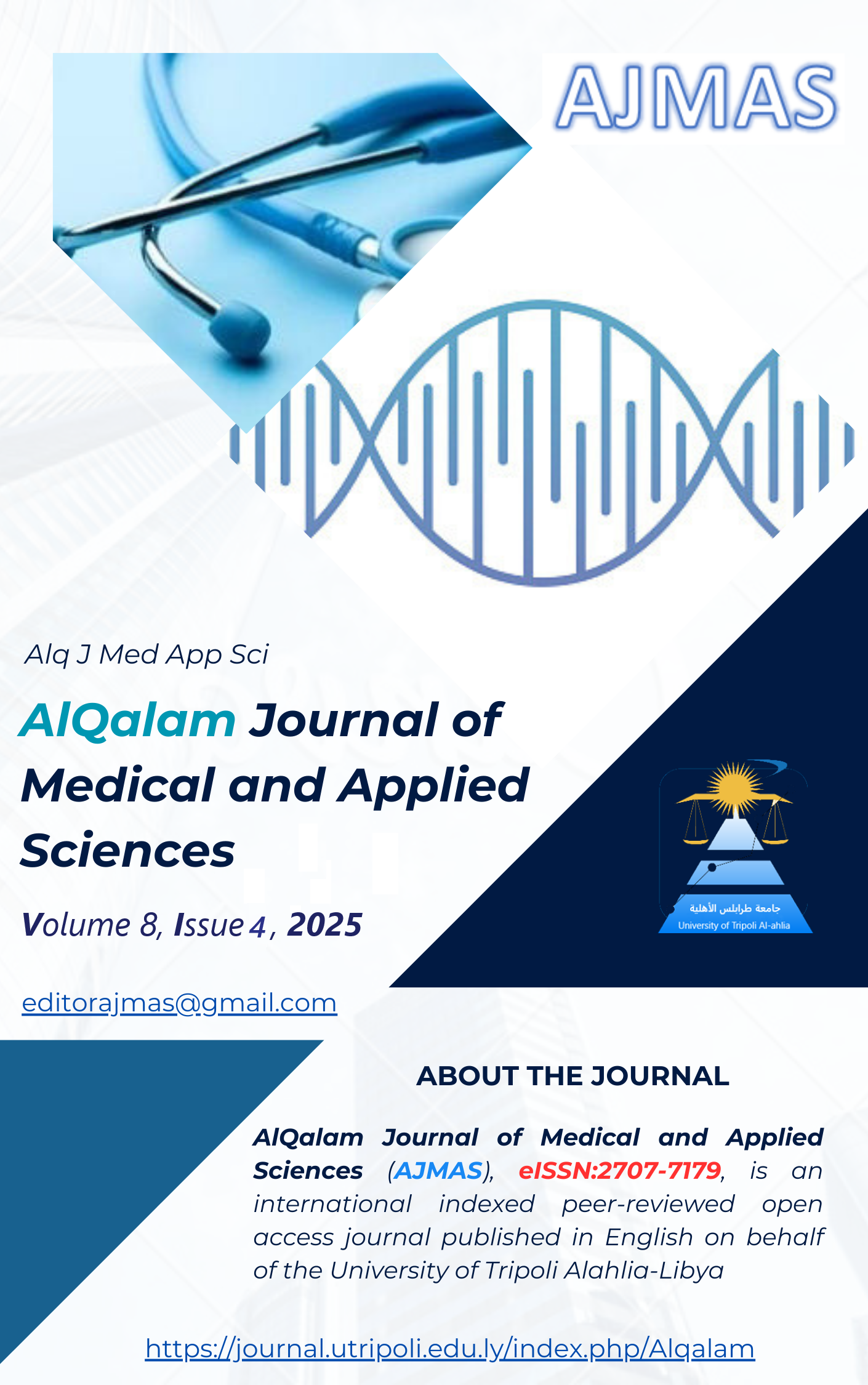Impact of Garbage Burners on Organic Compound Levels in Atmospheric Air Samples from El Bayda, Libya
DOI:
https://doi.org/10.54361/ajmas.258462Keywords:
Hydrocarbons, GC-Mass, Garbage Fires, Atmosphere City, Libya.Abstract
This study was conducted to identify and estimate organic compounds in composite air samples from several areas in the city of El Bayda (Libya). Samples were collected from (10) different sites within and around the city during the summer of 2024. Gas Chromatography-Mass Spectrometry (GC-MS) technique was used to measure and identify the types of organic compounds suspended in the air and the effect of garbage fires on them. The results of this study showed the presence some aliphatic and aromatic hydrocarbons and can be summarize as following: Ethylene oxide, Methylene chloride, 2, 4–dimethyl pentane, 2, 2–dimethylpentane, 2 methyl–Hexane, 3–methylhexane, 1, 2-bis(trimethylsilyl)benzene, methyl Cyclopentane, Methylene chloride, 2-isopropoxyethylamine, Propane, 1-benzazirene-1-carboxylic acid, and other different organic compounds. The total organic Hydrocarbon compounds in the ten studied locations inside and around El-Bayda city were as follows: 75.29, 45.90, 82, 25, 59.65, 13.54, 53.47, 81.65, 216.75, 45.72, and 39.35 µg/g. The study also showed variations in the detected compounds along the studied locations. The results indicated that the total hydrocarbon contents at some locations included some compounds, but were not recorded at these locations. The findings of this study concluded that the presence of organic compounds in the samples from the study area may be due to garbage fires near the city.
Downloads
Published
How to Cite
Issue
Section
License
Copyright (c) 2025 Rwaida Ashghila, Hamad Hasan

This work is licensed under a Creative Commons Attribution 4.0 International License.















